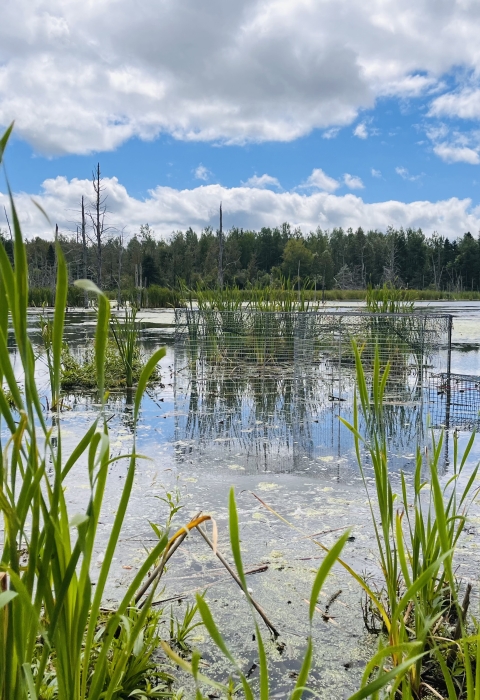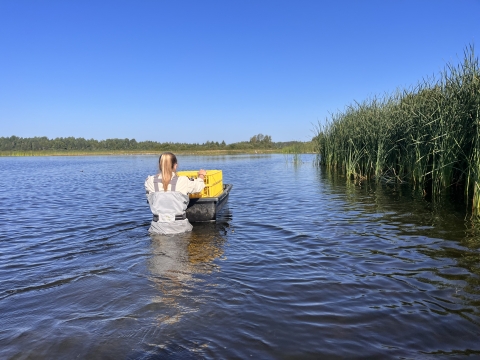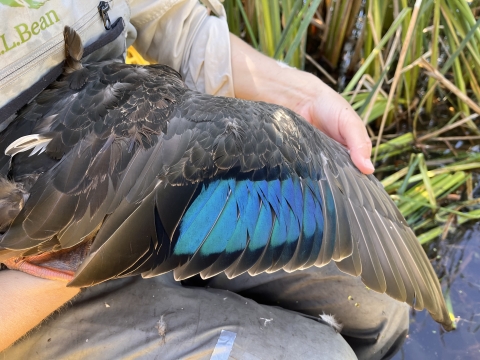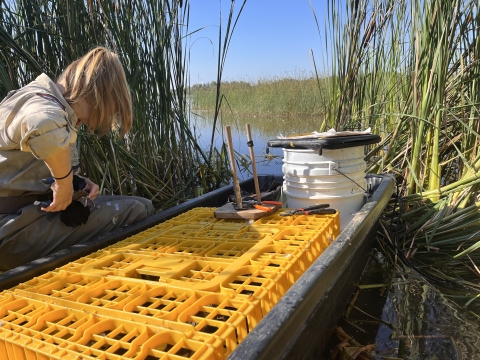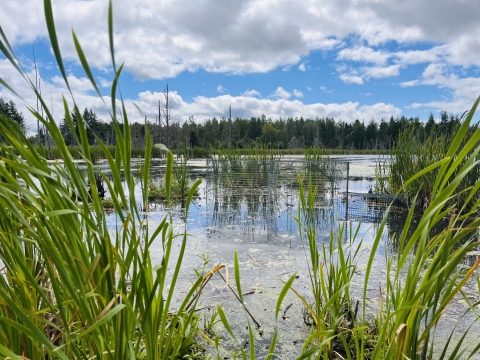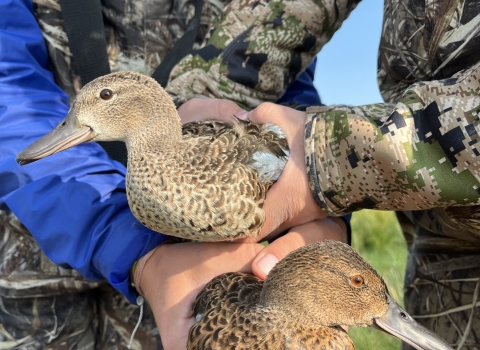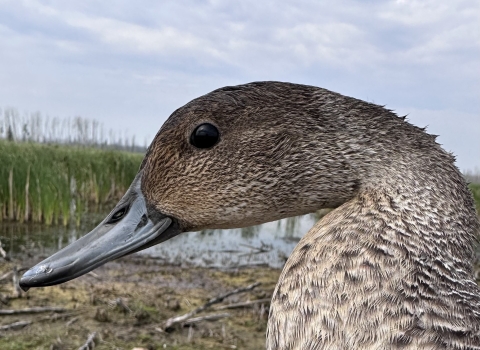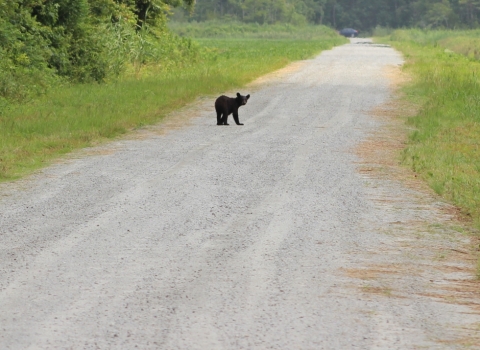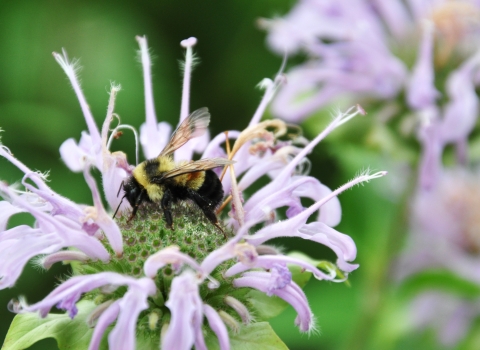This is the fourth year of a continued collaboration in northern Maine between the U.S. Fish and Wildlife Service and the Maine Department of Inland Fisheries and Wildlife. It was a pleasure working with wildlife biologists Kelsey Sullivan and Brittany Peterson again this year. Every year has brought us different conditions and this season we tackled high water levels, which can be really challenging when deploying traps! It took a lot more scouting and wading around in chest high water to find a good trap site. In some cases, we had to do a little landscape management, which entailed wielding a machete to clear areas in dense cattails to fit a trap.
Some years you must work extra hard for the ducks and this year was a good example. However, it paid off and we had one of the most successful seasons in northern Maine to date. We banded a total of 632 new ducks and recaptured 100 birds banded in previous years! Species composition of the newly banded birds in descending order were mallards, American black ducks, ring-necked ducks, green-winged teal, mallard dominant/black duck hybrids, blue-winged teal, American black duck dominant/mallard hybrid, American wigeon, and gadwall.
The high number of recaptures at our northern Maine location suggests very high site fidelity and the reservoirs seems to be a very important molting ground for a variety of species including mallards, American black ducks, and ring-necked ducks. Water levels determine the variety and number of ducks at a site, and this year the high water seemed to play in our favor for mallards especially. In lower water years we tend to capture a greater variety of species including smaller dabblers like the American green-winged teal. Ring-necked ducks molt here every August and they tend to stick to the middle and deeper parts of the reservoir, which are harder to capture. We usually attempt to drive-trap them, but conditions need to be just right, and they haven’t been the last two years. Maybe next year will provide a better opportunity.
No matter the catch, we love being in the field and working in some amazing locations. While it can be a lot of work to scout, clear areas, drag gear, and set up trapping locations, once things are situated and you open the traps it’s kind of like Christmas as a kid! We were eager to find out what was waiting for us in the duck trap every morning. A trap full of mallards is a sight to see and we started several mornings getting completely soaked while we herded them into our catch box. An invigorating way to start the day for sure! However, there are also quiet moments that I’ve come appreciate even more. The quiet walk into the trapping location through the marsh, the quiet moment of setting the trap and/or fixing a trap, and the walk back through the marsh after you’ve cleared a site. Those are the moments we get a chance to take it all in and appreciate the beauty of the place we are lucky enough to work in.
“There are degrees and kinds of solitude. An island in a lake has one kind; but lakes have boats, and there is always the chance that one might land to pay you a visit. A peak in the clouds has another kind; but most peaks have trails, and trails have tourists. I know of no solitude so secure as one guarded by a spring flood; nor do the geese, who have seen more kinds and degrees of aloneness than I have."
—Aldo Leopold, "Come High Water," A Sand County Almanac
Disclaimer: All banding, marking, and sampling is being conducted under a federally authorized Bird Banding Permit issued by the U.S. Geological Survey’s Bird Banding Lab and the Bird Banding Office in Canada.
